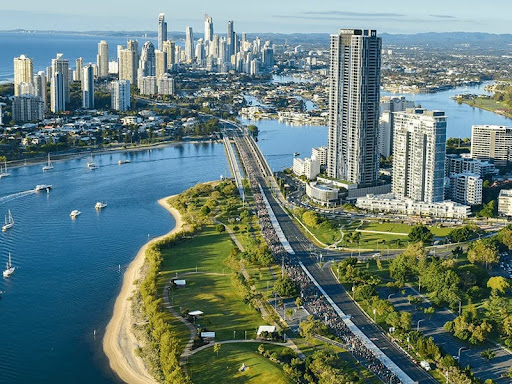
No place in Australia faces a brighter future than southeast Queensland, with the potential to secure much-needed infrastructure due to the Olympic Games.
This catalyst event can bring infrastructure spending from the future into the present, creating opportunities for growth and development.
However, it's crucial that the region seizes this once-in-a-lifetime opportunity without squandering it.
The potential of Olympic-driven growth
The Olympic Games have historically served as a catalyst for growth and development in host cities, with infrastructure spending being brought forward to accommodate the event.
This accelerated investment, if managed properly, can create lasting positive change in the urban environment, turning SEQ into a highly connected and liveable region.
The importance of timely infrastructure development
Ensuring that infrastructure projects align with the overall vision for SEQ requires thorough planning and coordination among local governments, state and federal authorities, and private stakeholders.
This collaborative approach will help create a unified and cohesive development strategy for the region.
Building infrastructure for future residents in areas that need development is more cost-effective and efficient than constructing it in densely populated regions.
Unfortunately, Australia has a 20-year infrastructure backlog, making the "build it and they will come" approach almost impossible.
To fully capitalize on the Olympic Games, southeast Queensland must prioritize infrastructure development and complete projects on time and within budget.
A well-connected city will require investments in transportation infrastructure, including roads, railways, and public transit systems.
This would not only support the Olympic Games but also enhance regional connectivity for years to come.
Alongside transportation and utilities, investments in social infrastructure such as schools, healthcare facilities, and community centres are essential to support the growing population and foster a sense of belonging among new arrivals. Leveraging private sector
Learning from success stories
Successful Olympic host cities, like Barcelona and Munich, have leveraged the Games to improve their regions for decades to come.
Munich's decision to extend its metro system in anticipation of the 1972 Olympics not only connected small villages with the city centre but also shaped the entire region's development for decades.
SEQ must learn from these success stories to maximize the potential of the Olympic Games.
The vision for South East Queensland
If managed correctly, the Olympic Games could significantly improve connectivity between the Sunshine Coast, Brisbane, the Gold Coast, and Toowoomba, potentially transforming southeast Queensland into a single megacity.
This would result in better connectivity and liveability compared to Melbourne or Sydney, with three international airports, a national airport, and more sunshine.
However, this vision depends on timely and cost-effective infrastructure development.
Projects that are not completed in time for the Games or are too expensive will not receive Commonwealth funding.
Interestingly the Queensland government has budgeted $37.6 Billion of infrastructure spending in the next 4 years.
Moving forward Greater Brisbane will benefit from a flurry of major infrastructure projects including:
- Cross River Rail ($5.4 billion) is a new 10.2-kilometre rail line between Dutton Park and Bowen Hills, with 5.9 kilometres of twin tunnels beneath the Brisbane River and the CBD
- The Gabba Redevelopment – Value $2.7 billion
- Brisbane Live ($2.5 billion) Located at a key CBD transit hub, a new 18,000-seat entertainment arena complex will be serviced by underground rail and busway infrastructure.
- Queens Wharf
- The Brisbane Metro ($1.244 billion) will be an important part of Brisbane's larger transportation network, which will connect the city to the suburbs.
- The New Queensland Cancer Centre – Value $750 million.
Avoiding squandered opportunities
Recent news about cost overruns for the Gabba redevelopment raises concerns that southeast Queensland may squander its once-in-a-lifetime opportunity to capitalize on the Olympic Games.
It's essential that the region works together to deliver projects on time and within budget to ensure that the Games leave a lasting positive impact on the urban environment.
Conclusion
The 2032 Olympic Games present a unique opportunity for South East Queensland to transform itself into a thriving, connected and sustainable megacity.
By adopting a proactive approach to infrastructure development and learning from past successes and failures, the region can ensure a bright future for its residents and Brisbane's property buyers.
This once-in-a-lifetime opportunity must not be squandered; instead, it should be harnessed to create a legacy that will benefit the region for generations to come.